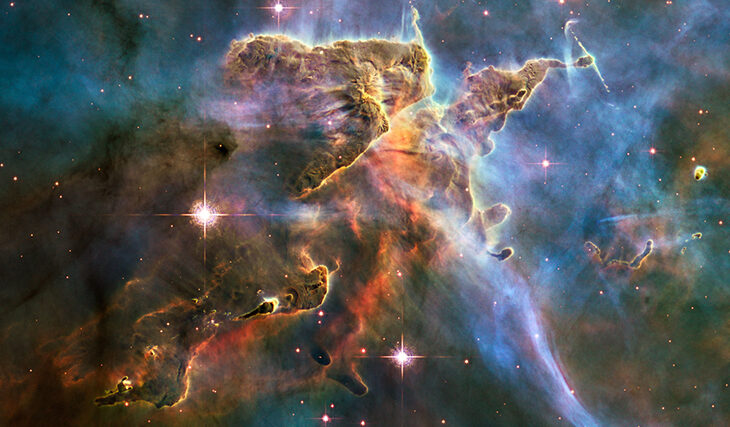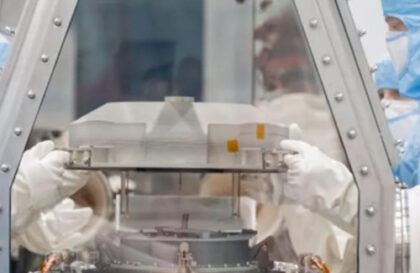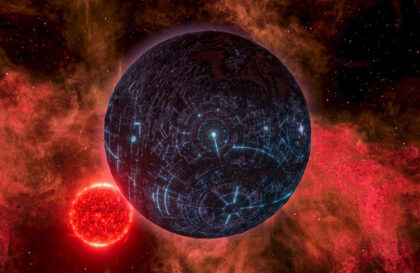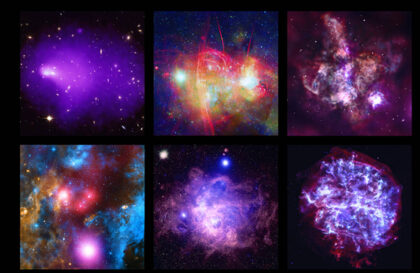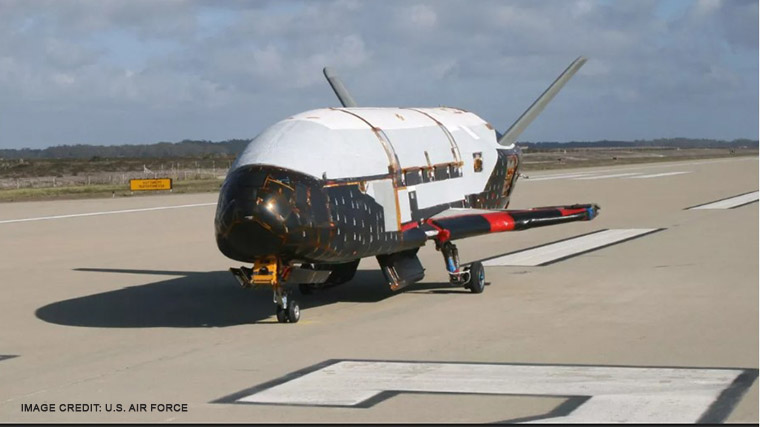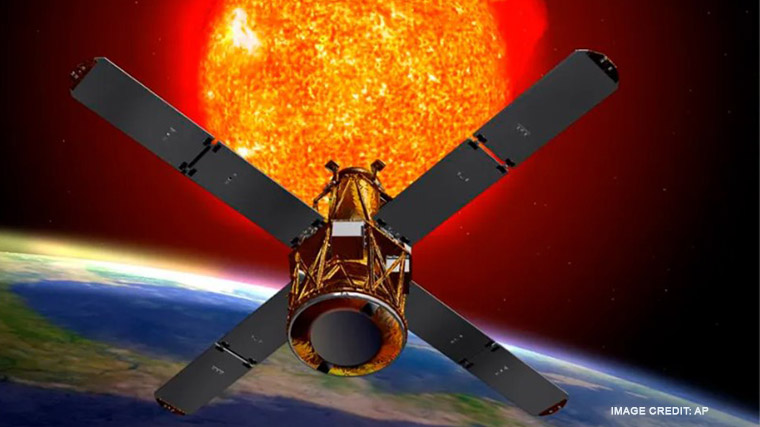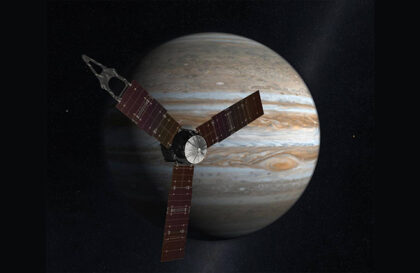Carina Nebula
NASA’s Hubble Space Telescope has captured a billowing cloud of cold interstellar gas and dust in the Carina Nebula, 7,500 light-years away in the constellation Carina. This cloud serves as an incubator for new stars, creating a fantastic landscape of hot young stars that emit ultraviolet radiation and stellar winds. The nebula collapses, but some pillars remain and continue to form new stars.
Star formation also creates jets of gas that move in different directions, creating glowing regions of the nebula called Herbig-Haro (HH) objects. The image shows long streams of gas, pairs of them in different parts of the image, such as HH 901 and HH 902, which are typical signs of the birth of new stars.
The colors in this composite image correspond to the glow of oxygen (blue), hydrogen and nitrogen (green), and sulfur (red).
DSS Image of the Carina Nebula
This is a Digital Sky Survey (DSS) image of the Carina Nebula, with DSS cropping and David Malin overlay.
Hubble’s Wide View of ‘Mystic Mountain’ in Infrared
The image shows many stars behind the gas curtain of the nebula’s hydrogen wall, saturated with dust. The foreground pillar becomes translucent as infrared light from the background stars penetrates most of the dust. Several stars inside the pillar also become visible. False colors are assigned to three different wavelength ranges of infrared radiation.
Compass and Scale Image for UVIS/IR/Details
Infrared View of Pillar and Jets HH 901/902
Hubble Space Telescope
Launched in 1990, the Hubble Space Telescope was designed to allow periodic maintenance to maintain its performance and extend its life. From 1993 to 2009, astronauts flew five Hubble servicing missions, where they replaced components such as batteries, gyroscopes, and electronic devices, and installed advanced scientific instruments. Each such service made Hubble more powerful and productive.
Thanks to its special design for service, astronauts could easily remove and replace various components, whether it was the size of a shoebox or even a telephone booth. Special tools and wrenches made this procedure possible.
This orbital maintenance approach ensured that Hubble remained operational and continued to produce scientific discoveries into the 21st century, playing an important role in the exploration of the Universe.
Based on-site materials https://hubblesite.org/
Image credit: https://hubblesite.org
https://hubblesite.org
https://hubblesite.org
https://hubblesite.org
https://hubblesite.org
https://hubblesite.org
